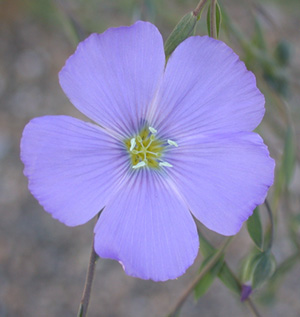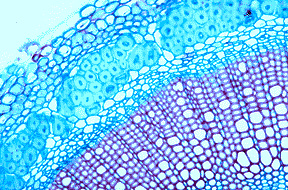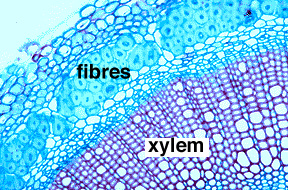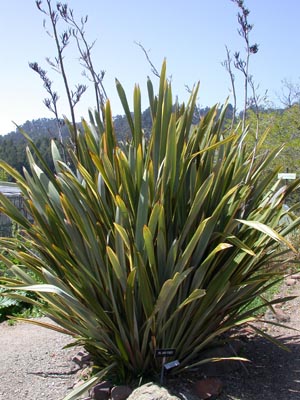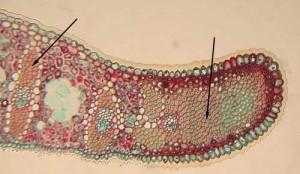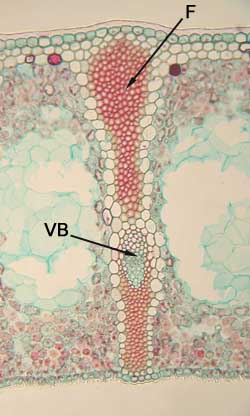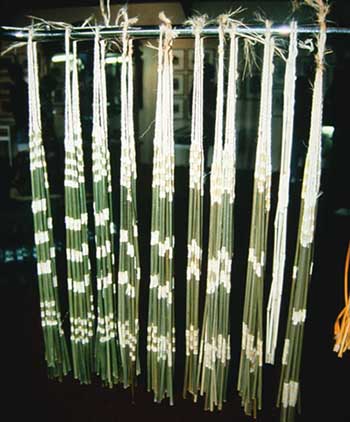Types of Fibres (based on where they are found in the plant):
(a) Surface fibres
found on the covering of seeds, leaves or fruits
Examples:
| Cotton – Gossypium, fibres from seed coat Cotton bolls are pictured below. The seeds are attached to the ends of long fibres. The fibres are almost pure cellulose. Which makes them both soft and absorbent. |
Coir (coconut) – Cocos nucifera, filling, cordage, mats, made from the fibrous ovary wall
The figure below is mature coconut fruit cut in half. You can see the fibrous ovary wall that is used for cordage and mats. Recently the fibres of coconut have been developed as a product for use as an alternative to peat.
Kapok – Ceiba pentandra, filling from seed fibre, once used in life jackets.
(b) Bast or Soft Fibres
– clusters of phloem fibres found in stems of many dicotyledonous plants
Examples:
| Linen – Linum usitatissimum, linen, perhaps the oldest plant fibre used to make cloth It is a plant of many uses; not only is it an important source of fibres, but it also produces pretty flowers (pictured below) as well as supplying dietary fibre (flaxseed). |
| The fibres are found in the outer stem. They are very thick-walled. They contain little lignin, but have waxes which gives linen its characteristic sheen. |
| In the picture below the fibres have been labeled as well as the xylem. Xylem is conducting tissue that we will examine soon. |
Cannabis hemp – Cannabis sativa, hemp cloth, canvas, cordage
Ramie cloth – Boehmeria nivea
Jute – Corchorus spp., burlap, carpet backings, upholstery lining, inexpensive clothing
(c) Hard or Leaf Fibres (usually higher lignin content)
– vascular bundles and fibre bundles in leaves of monocots
Examples:
| New Zealand Flax – Phormium tenax the Maori of New Zealand recognized 53 varieties New Zealand flax has become a popular garden plant. It is not so well used as a textile fibre now, but at one time was very important to the Maori people of New Zealand. It was not only used to make clothing elong fibrous leaves were an important source of cordage, baskets, mats and decorative pieces. |
| In the prepared slide below of a cross-section through a leaf you can see the extensive fibres. If you have one of these plants in your garden you should try tearing in half cross-ways. It is almost impossible because of the fibres that run along the leaf’s margin. |
| Below is a demonstration of the elaborate work of the Maori of New Zealand. The Maoris are believed to have settled in new Zealand approximately 1000 years ago. There is evidence that they are Polynesian in origin. They have relied heavily on Phormium tenax for many facets of their lives. Thepiupiu, being prepared below, is still sometimes worn.. Preparation begins with the marking of the design and the scrapinp with a mussel shell some of the photosynthetic soft tissue. You can see the pattern left behind. |
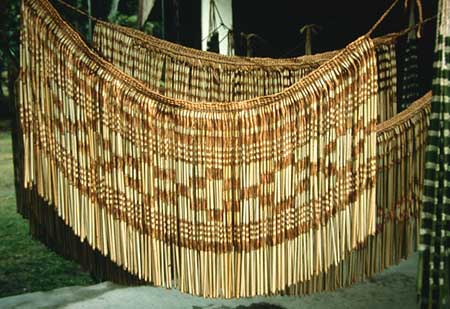
Piupiu after it has been treated with plant-derived dyes.
When finished it will have a kilt-like appearance.
Sisal – Agave sisilana, cordage and matting
Sisal is most commonly used in making string, it was once used by the Maya……
Manila hemp (abaca) – Musa textilis, cordage, (in the past used in clothing, cigarette filters)
Pina (pineapple)- Ananas comosus, cloth (Philippines).


